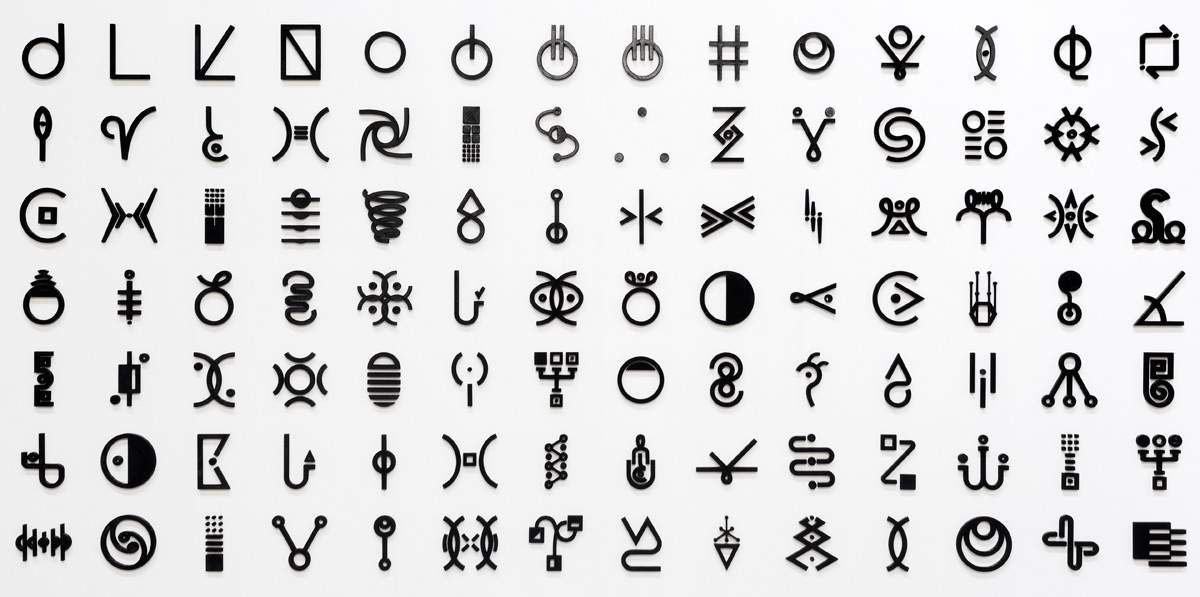The muscle of thought is the brain: David Reimondo and his new languages on display in Turin, Italy
David Reimondo (Genoa, 1973), an esteemed contemporary Italian artist famous for his “etymographic” research, is the protagonist, from April 18 to July 6, 2019, of the solo exhibition Il muscolo del pensiero è il cervello (The muscle of thought is the brain), curated by Gaspare Luigi Marcone and set up in the historic Mazzoleni Gallery venue in Piazza Solferino in Turin. The exhibition aims to retrace an important part of Reimondo’s research on language and its origins: research that produced the works that made the artist known to the public.
The exhibition has a dual nature, “physical” and “rational,” and the protagonist is precisely that etymographic research that represents the central junction of Reimondo’s most recent production. Thus, some important and well-known works will be exhibited, such as Etymography (2010-2018), a long project in which the artist has been engaged in creating “symbols” in which a very particular synthesis is made (between ideograms, pictograms, glyphs and more) until the production of new graphemes and new phonemes. The new symbols are thought of by Reimondo as “cells” that form an articulate body, which, however, is not to be read through the traditional tools of linguistics or according to predetermined rules. Reimondo’s language is a kind of universal visual language, constantly evolving. But that’s not all: Reimondo’s etymographic research is also presented through other works, such as wood sculptures colored with black ink for professional printers, which combines present and past just by working on materials.
Reimondo’s works thus go on to compose a new language designed as a tool for thinking differently, and for not being conditioned by the centuries-old legacies that have formed (and continue to form) human beings, their language and, therefore, knowledge. What Reimondo wants to provide is therefore, in reality, a “utopian tool” that aims to be charged with imaginative, rational and emotional freedom. The exhibition is structured in such a way that in each room there will be a reference to the brain, considered from time to time as a muscle, or again as an organ, and investigated by the artist in its sections: the exhibition thus also intends to turn into a journey within the left hemisphere and the right hemisphere, encountering logic and rationality, intuition and creativity.
Other works in the exhibition include a number of works that summarize the artist’s polytechnic and eclectic vocation, such as the installation Act of Thought (2017; papier-mâché, needles, paper, mixed media and video projection) and unpublished works, which analyze the forms and ideas of writing by further combining traditional materials and contemporary technology, such as Videocalligraphy (2018; RGB LED panels, looped video mov, cotton thread, various writing instruments).
Reimondo, who lives and works in Milan, recently exhibited his research at the exhibition Etymographic Line presented at the Teatro dei Filodrammatici in Milan in 2018. He has had numerous solo exhibitions, held (to name the most recent) at Museo Novecento in Florence, Galleria Bianconi in Milan, and The Open Box space in Milan. Reimondo also won the Terna 05 Prize in the 2013 edition.
The exhibition can be visited during the opening hours of the headquarters of the historic Galleria Mazzoleni, founded in Turin in 1986 by Giovanni and Anna Pia Mazzoleni as a natural evolution of their private collection begun in the first half of the 1950s: Tuesday through Saturday from 10:30 a.m. to 1 p.m. and 4 to 7 p.m. The gallery venue occupies three floors of Palazzo Panizza, in central Piazza Solferino. Admission is free. The exhibition will be accompanied by the monographic publication dedicated to David Reimondo, published by Artribune in collaboration with Mazzoleni, consisting of a rich iconographic apparatus and critical texts in Italian and English.
Pictured: David Reimondo, Etymographic Material (2018).
 |
| The muscle of thought is the brain: David Reimondo and his new languages on display in Turin, Italy |
Warning: the translation into English of the original Italian article was created using automatic tools. We undertake to review all articles, but we do not guarantee the total absence of inaccuracies in the translation due to the program. You can find the original by clicking on the ITA button. If you find any mistake,please contact us.



























